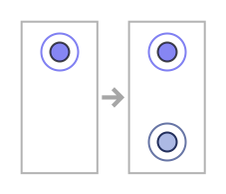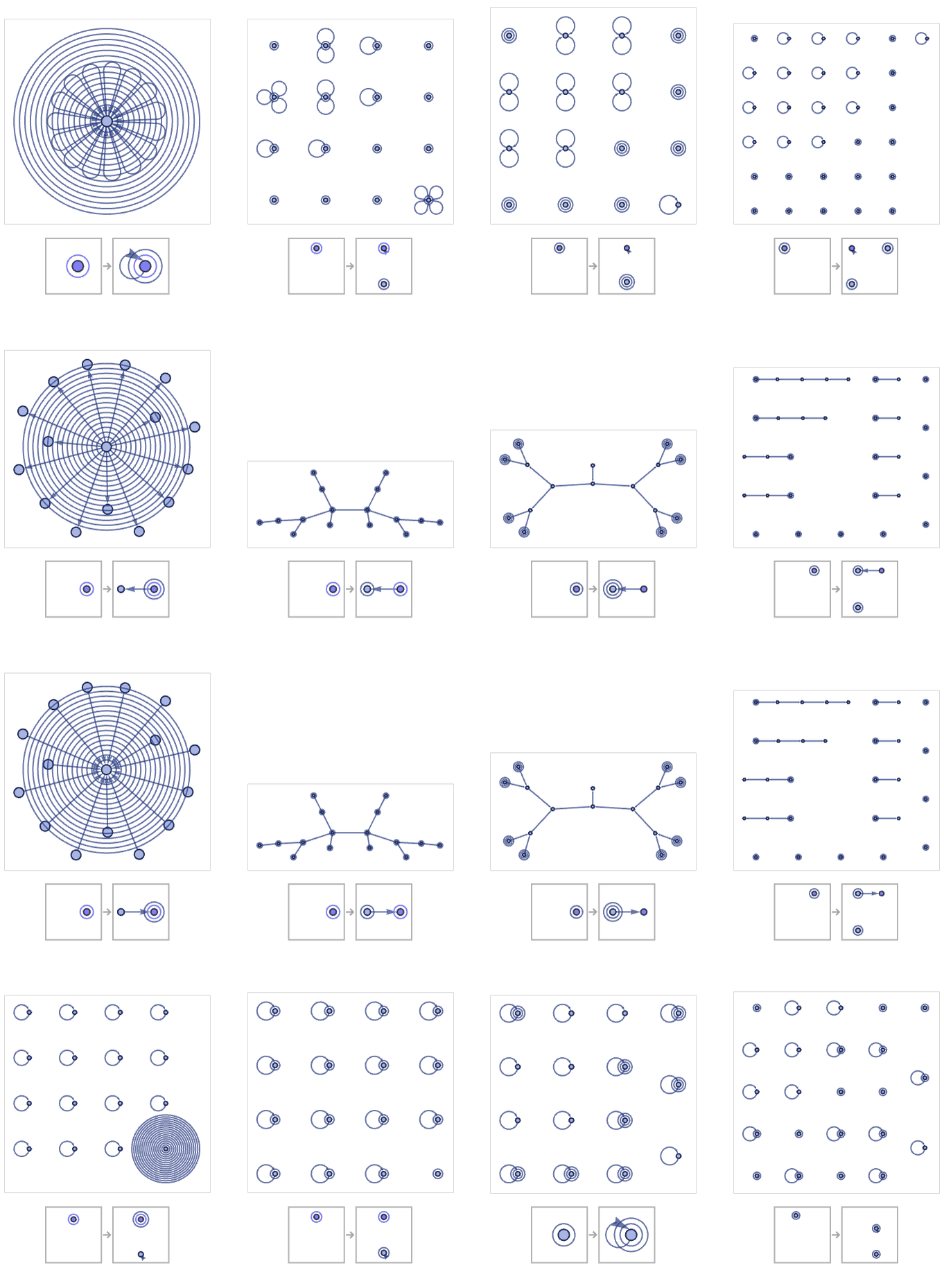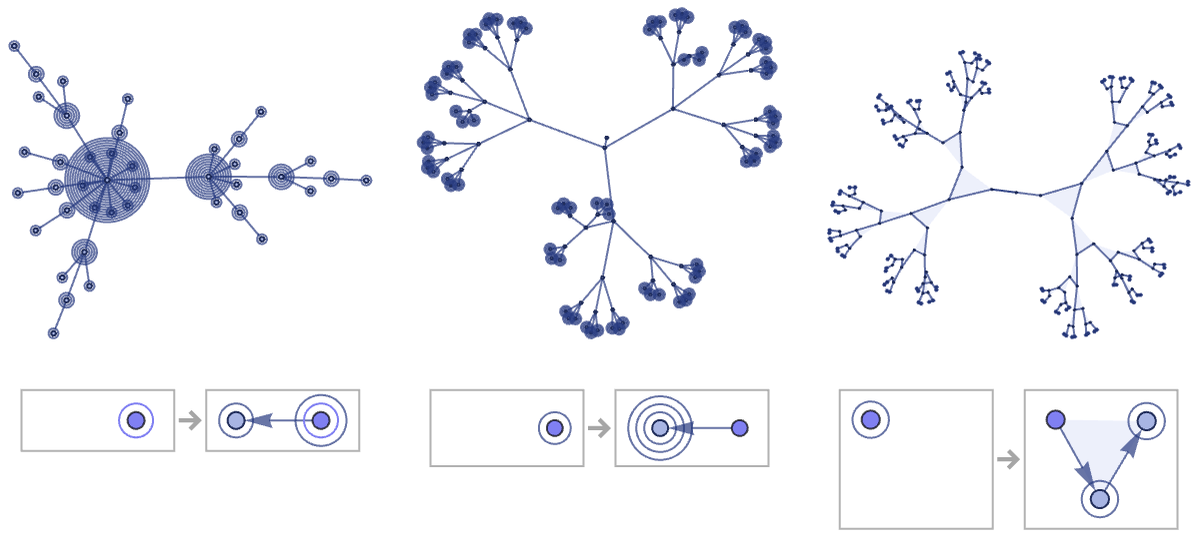The very simplest possible rules are ones that transform a single unary relation, for example the 11 21 rule:

This rule generates a disconnected hypergraph, containing 2n disconnected unary hyperedges at step n:

To get less trivial behavior, one must introduce at least one binary relation. With the 11 1211 rule
one just gets a figure with progressively more binary-edge “arms” being added to the central unary hyperedge:

The rule

produces a growing linear structure, progressively “extruding” binary edges from the unary hyperedge:

With two unary relations and one binary relation (signature 11 1221) there are 16 possible rules; after 4 steps starting from a single unary relation, these give:

Many lead to disconnected hypergraphs; four lead to binary trees with structures we have already seen. ({{x}}→{{x,y},{x},{y}} is a 12 1221 rule that gives the same result as the very first 12 22 rule we saw.
Rules for a single unary relation can never give structures more complex than trees, though the morphology of the trees can become slightly more elaborate:

 download pdf
download pdf  ARXIV
ARXIV peer review
peer review